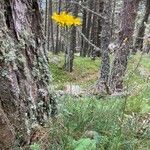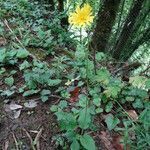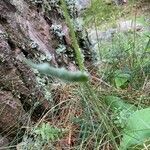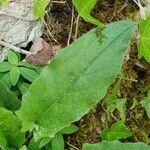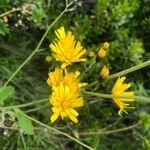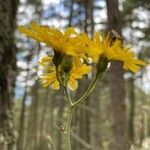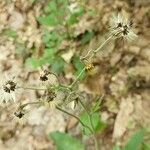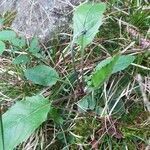Perennial herb to 70 cm high with a woody taproot with many fibrous roots. Stems with stellate, glandular and simple (1–3 mm long) hairs. Leaves basal in a rosette and cauline, ± elliptic, 50–110 mm long, 25–45 mm wide, often purple mottled, margin toothed, upper surface darker than the lower, both with long white simple hairs (minutely barbed under x40 microscope), denser on undersurface and along veins and margins; petiole to 40 mm long. Flower heads 5–8 in a loose corymb; involucre 8–9 mm long; involucral bracts18–21, outer surface with stellate-pubescent and glandular hairs. Florets golden yellow; ray florets with 5 teeth at the apex. Achenes black, ribbed, 3 mm long with white pappus.
Similar to no. 8 [Hieracium lachenalii C. C. Gmel.], and passing into it; basal lvs with well defined blade, broadly rounded or subtruncate to cordate at base; stem commonly naked or with only 1 or 2 lvs; 2n=27, 36. Native of Europe, sparingly intr. along roadsides and in other waste places from N.S. and Que. to N.Y. and N.J., and reportedly w. to Mich. June, July.
